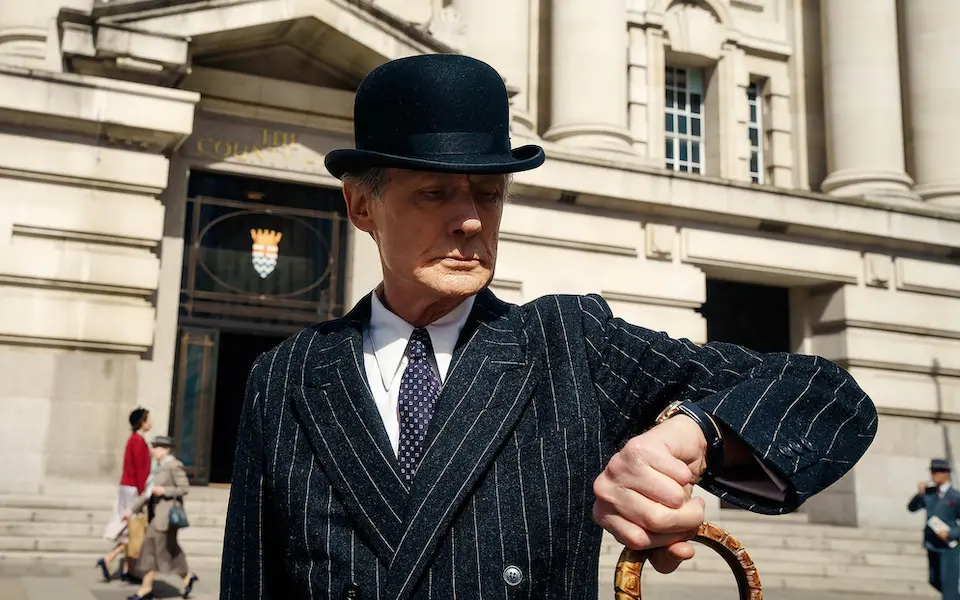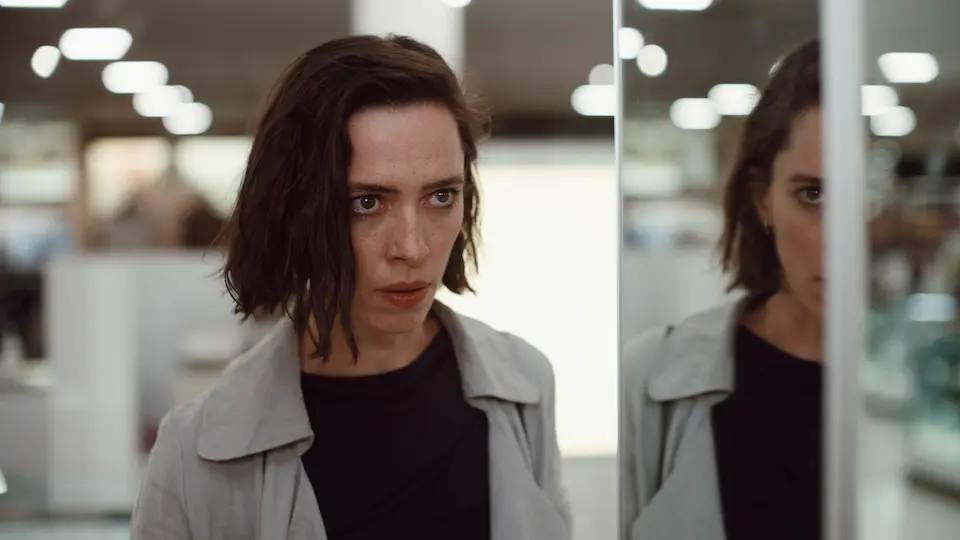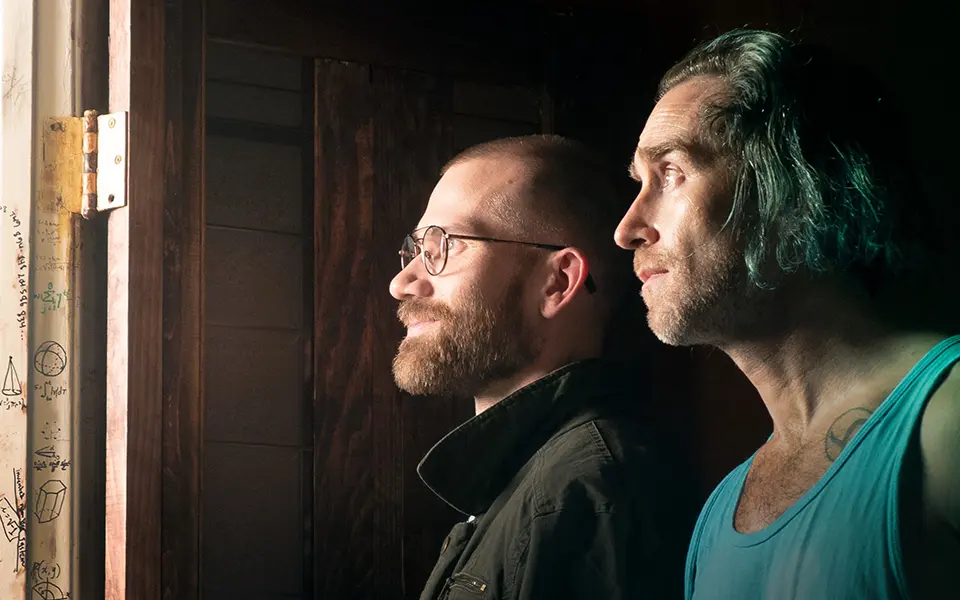
The director of Living on using the time we have to work and live with purpose
Published on January 31, 2022
Odd as it sounds, one of the most relatable characters to emerge at Sundance this year was first introduced onscreen 70 years ago in the Kurosawa classic, Ikiru (To Live).
In Living, the remake that premiered at the 2022 Sundance Film Festival, Bill Nighy (About Time, Emma) brilliantly embodies the exhausted civil servant Williams, a paper pusher broken by a bureaucracy that’s draining the life from him.
Facing his own mortality after countless years of keeping calm and carrying on, Nighy’s character has to decide between enduring his duties or following his passion to find purpose in his work and life again.
After a year that saw millions leave their jobs in the Great Resignation, Living is a timely reminder that the struggle to achieve work-life balance has been going on for generations. We spoke with director Oliver Hermanus (Shirley Adams, Beauty, Moffie) about learning to overcome his own burnout, refining scripts over Zoom, collaborating with the composer on Dropbox—and why filmmakers should never wait for someone else to turn their ideas into reality.
With the rise of remote work and the passion economy, the themes of Living feel especially resonant right now. Is that why you and screenwriter Kazuo Ishiguro decided to make an update?
I think Ishiguro had an interest in this changing of the guard in England [for] men born at the turn of the century, being part of an empire dying, when the world wars had ultimately changed the status of England as a superpower.
I think there's an intersection there that fascinates Ishiguro. It's something he's explored before in other works he's done. The character of Williams dying in this time is something Ishiguro finds interesting, so perhaps that’s why we never considered making it a contemporary piece.
One key difference between our transposing and the original Japanese film is that that particular film was a contemporary piece of social realism for Japanese audiences. It was about postwar Japan in a very present way. Whereas now, to make a film that is essentially a period film set 70 years ago, it does change the nature of its message. It perhaps argues that the message is now a voice from the past trying to inform the present.
Did the process of telling this story make you examine the place work has in your own life? Have you experienced periods of burnout in your career?
I’ve definitely experienced burnout. Filmmaking is sort of like tearing of the muscle constantly. It’s tiring. It’s unforgiving. It's personal pressure. The buck stops with you. It's a creative necessity to be innovative. Even in making this particular film, we were faced with COVID. I was faced with shooting in that foreign country. But then there were all the pluses—there was the change. There was the nature of working with British actors, talent, and creatives that were beyond what I've had access to in South Africa. So as much as it was an examination of my ways of working, it was also an advance of them.
“To make a period film set 70 years ago, it changes the nature of its message. The message is now a voice from the past trying to inform the present.”
There was a specific team of COVID managers and coordinators listed in the credits at the end of the film. What was it like to work with that kind of team?
It's just part of your day. From the point of arriving at the set, you have to be tested. You have to have a process of zones and considerations. I think one of the biggest ways COVID has affected the film set is catering. We no longer sit around and eat and just enjoy each other's company. COVID has separated us from each other. It's almost like flying on an aeroplane. You’re all given your single-serving meal. In that way, it feels very isolating. I think films are meant to be made collaboratively. There’s value in the crew getting time to spend together socially on a set. I’d like to return to that as quickly as we can.
I read that you spent many hours working remotely on this production? How did that process compare that the way you worked on previous films?
With Living, from a script writing process, I was working with Ishiguro remotely from my house here in South Africa. He was in England. We would spend hours talking over the internet. But also, this is the first movie where, for absolutely every role, I did every bit of casting via the internet, even when I was in England.
Then in the post production, our colorist is based in New York and our Director of Photography happened to be in South Africa when Omicron hit. He was not able to return to London, or go with me to New York. So we actually colored this film with a colorist in New York, myself in London, and our DOP Jamie Ramsey here in Cape Town. Bizarrely, we were able to make that work. It's seemingly all possible. You can make a movie remotely, but I would never want to shoot the movie remotely. I think that's a bridge too far!
“This is the first movie where I did every bit of casting via the internet, even when I was in England.”
How did Dropbox factor into that process?
One of the key Dropbox attributes of our film was actually with our music composer. She used Dropbox as her platform to share the score with me and have faster communication around score. She exclusively used it. At this point, our entire journey of the score—all of the drafts or proofs or recorded orchestrations are all in Dropbox.
What was the biggest obstacle you had to overcome in the making of Living?
For every film, it’s always time. I just wanted more time in every part of the process. You're always wanting to do your best work, do greater work. But time is always the same. As a director, you're always having to be faster, better, more equipped, and have a greater understanding of your craft and a greater execution of the craft. And there's always this urgency to hit the premiere date.
When you’re assembling your crew of collaborators, are you looking for creative chemistry or complementary skills?
It's a bit of both. As a director, you want a shorthand. You want trust. You want symbiosis. The director of photography [Jamie Ramsay] has been the DP on most of my films. He’s also South African. We work very closely. It's a comfort zone, a mutual creative expansion. On Living particularly, I got the opportunity to work with people who are just 100 million times better at their job than I am at my job. So you're learning.
What advice would you give to creators who are struggling to stay inspired right now?
When I was coming from South Africa, never really believing that I would ever be given the opportunity to make films, somebody once said to me: You can't wait for it to happen. You can't only have it in your head and expect somebody to take it out of your head and make it reality. You have to actively do it.
If you're a director, even at the start of your career, you have to be a writer. Nobody's necessarily going to give you a script. So this is a time to write—to get up early, work hard, put in the hours, and learn to be better at your craft. Unfortunately, nobody's going to pay you do that. It's a self-motivating thing for a very long time. For me, it's always about encouraging younger filmmakers that when you think it's going nowhere, it’s at that exact moment when it actually does go somewhere.
What do you want audiences to feel after seeing Living?
Considering the time that we're living through right now, I want Living to be something that makes people feel better, happier, and alleviates a sense of isolation or loneliness or loss or death. Its hope and its dream as a film is to be something good.
This interview has been lightly edited and condensed for clarity.
To learn more about Living and the 2022 Sundance Film Festival, visit festival.sundance.org



